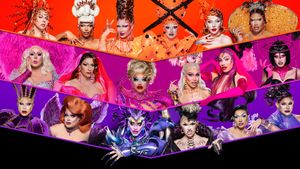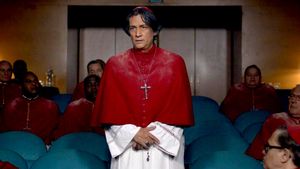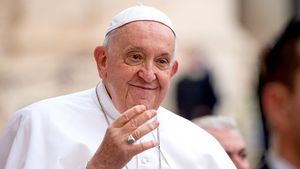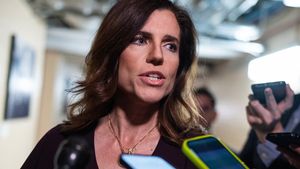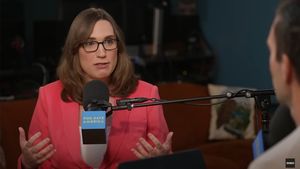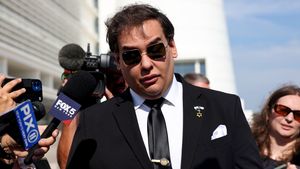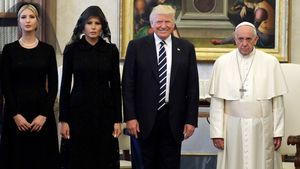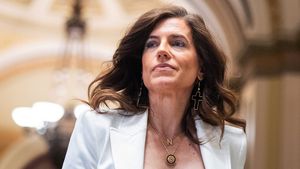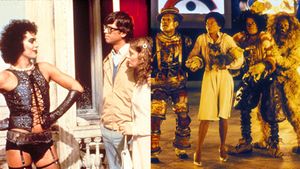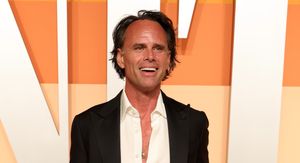
CONTACTCAREER OPPORTUNITIESADVERTISE WITH USPRIVACY POLICYPRIVACY PREFERENCESTERMS OF USELEGAL NOTICE
© 2025 Equal Entertainment LLC.
All Rights reserved
All Rights reserved
Don’t miss our hottest news! Sign up today for our free newsletter.
Trending Tags
Trending Tags
By continuing to use our site, you agree to our Private Policy and Terms of Use.
Accept
Photo: Jude and Conner in The Fosters (ABC Family)
Sometime during the first season of Faking It (you know, MTV’s progressive take on sexuality and teen angst), out and proud school luminary Shane Harvey (Michael J. Willet) reveals that he came out of the closet in fourth grade, and after that, “everything became easier.”
Shane is one of many LGBT characters in current film and television whose take on their sexuality is open and confident; they don’t let it define their identity. However, I cannot help but to wonder what fourth-grade Shane’s coming-out story would have looked like. And whether it would be important to see it in order to understand him better.
I spend a lot of time around people who consume LGBT media regularly. And I’ve come across a very interesting recurring argument: that we are past coming-out stories. For the longest time, coming out was the expected and often only plotline for LGBT characters, and their sexual orientation was the extent of their dimension. Coming out has become a cliché. And soon these narratives will cease to exist.
I don’t know if this is true or not, but both as someone who aspires to tell stories for a living and as part of the LGBT population, I certainly hope it’s not.
Don’t get me wrong. I am ecstatic to be able to live at a time when characters certainly don’t need a coming-out story in order to be interesting, realistic people. Sexual orientation doesn’t and shouldn’t define a character’s identity. But it does shape the way they look at life.
As audience members we project ourselves all the time into the characters we see when they fall in love, suffer a loss, or accomplish a goal. Inevitably, as LGBT, we see ourselves in them when they come out, as well. Seeing these stories safely on-screen can give a glimpse and prepare us to what’s to come, and evoke memories after it already happened. I knew there was a part of me in Kurt Hummel (Chris Colfer) when he came out to his father early in the run of Glee, way before I did it myself. And now that I went through it and look back, I see myself even more in that moment.
Coming out is a landmark moment in any LGBT person’s life. For many, it’s probably the most important one. It’s the moment you decide to live in truth with yourself, when you realize who your true loved ones are, when your core beliefs are reinforced. A positive coming-out experience makes as much of an impact as a negative one, and it certainly frames the way you carry yourself from then on.
Just as coming out shapes an individual’s experience in real life, it should shape a fictional character in the same way. Seeing them go through (or sometimes just talk about) this process would shed light on a turning point in their lives and would help us understand them much better. We are constantly asking for accurate, diverse, and multidimensional portrayals of LGBT people in film and television. If done right, coming-out narratives don’t simplify us; on the contrary, they make us more complex by showing how a single event affected every other area.
If acceptance keeps going up with the same fast pace it has, coming out will naturally become less and less the norm. But there will always be people who will need to do it anyway. And these people need to see themselves reflected on their screens. It may be the final push they need.
For questioning people, or people who are too scared to come out or don’t know how to approach it (and there are many; I was once one of them), watching an LGBT character live their life openly without any mention on how they got there can perhaps have the same alienating effect as watching one who doesn’t come out at all. It’s important for people having difficulties with coming out to see other people go through the process and, hopefully, get to the other side safely. I don’t know how much longer it would have taken me to come out if I hadn’t seen Justin Suarez (Mark Indelicato) come out to his Mexican family in Ugly Betty. Yeah, I loved Marc St. James (Michael Urie) as much as the next guy, but he was already there. And even he got a late-in-life coming-out to his mother. That was a good show.
As society evolves, the way we tell coming-out stories will have to shift as well. And it already has. We can no longer do the very special episodes. We are certainly past that.
Kids will come out at younger ages; The Fosters recently made history by showing the youngest LGBT kids on television. Coming out is many times not a part of a character’s present but of their past; Orange Is the New Black keeps showing new sides of its characters through flashbacks. Sometimes, the repercussions of coming out are seen in simple relationships and conversations; Looking had a standout episode last season in which Patrick’s (Jonathan Groff) sister’s resentment over his being gay resurges during a zoo visit.
Let’s not stop. Let’s keep those characters coming out. Let’s keep the narrative alive. It’s important.
What I’m saying is all I really want is a fourth-grade Shane Harvey coming-out flashback. How adorable would that be?
From Your Site Articles
From our Sponsors
Most Popular
51 celebrities with OnlyFans accounts to thirst over
January 02 2025 11:55 AM
All-time greatest lesbian sex scenes in movies & where to stream them
December 13 2024 12:47 PM
34 same-sex couples who don't mind the age gap
December 17 2024 6:29 PM
Here are the reasons 'straight' men hook up with guys
December 17 2024 1:05 PM
Popular gay slang inspired by the animal kingdom explained
December 12 2024 1:25 PM
101 gay sex tips you didn't learn in sex ed class
December 18 2024 6:03 PM
18 old Hollywood stars you probably didn't know were LGBTQ+
December 04 2024 12:31 PM
35 TV shows with bisexual male characters & where to watch them
December 03 2024 12:01 PM
31 best himbo characters in movies & TV shows we can't help but love
December 17 2024 12:46 PM
The 55 best queer animated shows ever & where to watch them
December 18 2024 2:53 PM
Don’t miss our hottest news! Sign up today for our free newsletter.
Latest Stories
Joel Kim Booster loves that fans are going feral over his steamy Speedo pics
April 23 2025 6:00 PM
27 lost lesbian storylines and characters that deserved the spotlight
April 23 2025 2:52 PM
Walton Goggins will poke your eye out in sexy new Speedo pics
April 23 2025 1:42 PM
JoJo Siwa comes out as queer on 'Celebrity Big Brother UK'
April 23 2025 12:54 PM
K-pop star JUST B’s Bain comes out: 'Proud to be part of the LGBTQ+ community'
April 23 2025 11:28 AM
'Drag Race' winner Venus clarifies PV altercation in stunning update
April 22 2025 3:33 PM
11 famous lesbian and WLW couples making us believe in love in 2025
April 22 2025 3:03 PM
Trending Stories
Recommended Stories for You

Jorge Molina
Jorge Molina was born in Mexico City and currently lives in Los Angeles, where he studies to become a writer. He idolizes good television, coming-of-age stories, murder mysteries and Marilyn Monroe.
Jorge Molina was born in Mexico City and currently lives in Los Angeles, where he studies to become a writer. He idolizes good television, coming-of-age stories, murder mysteries and Marilyn Monroe.



















































































